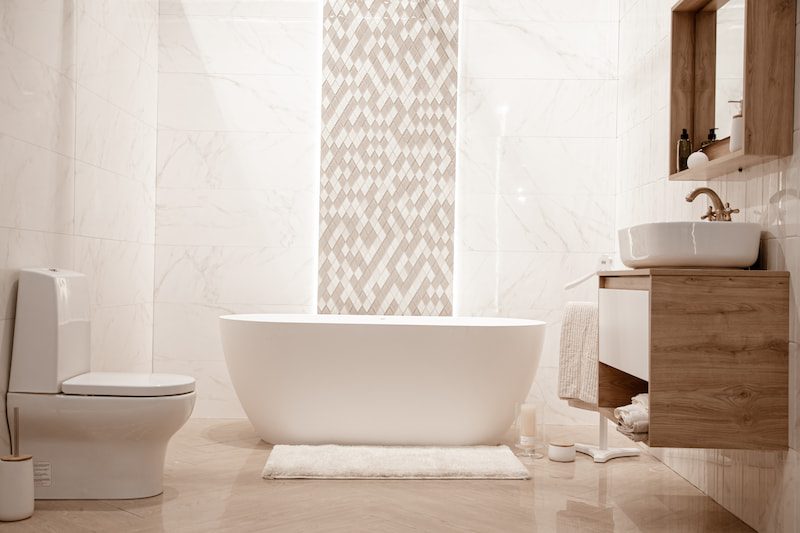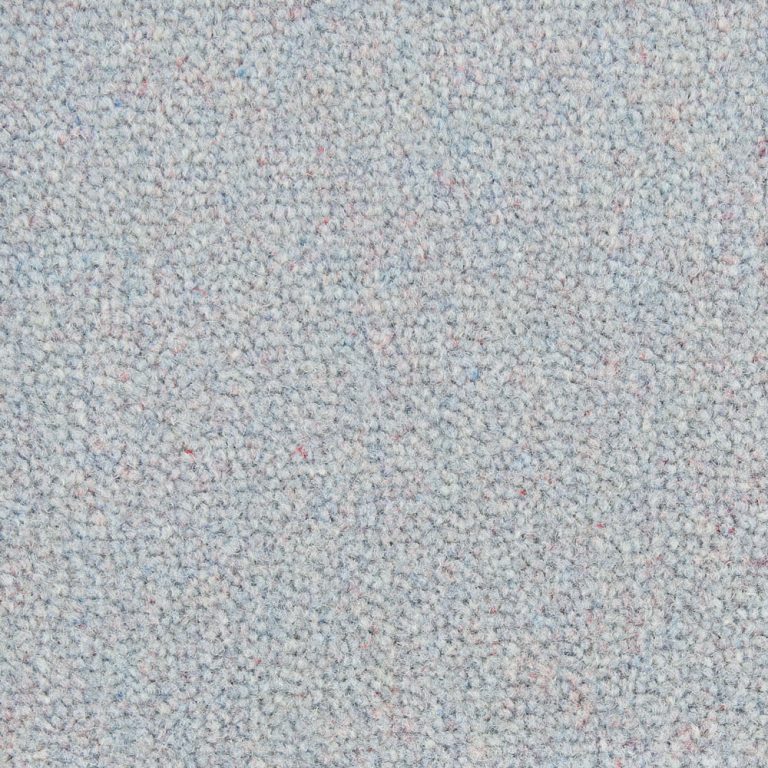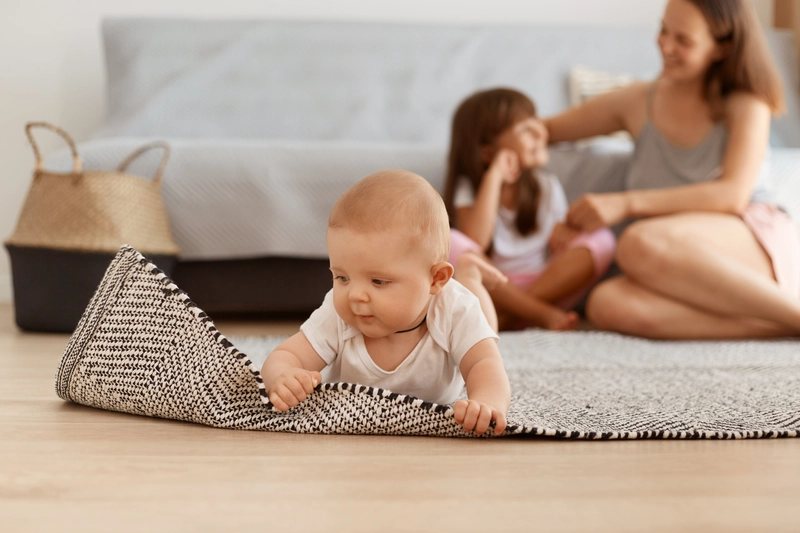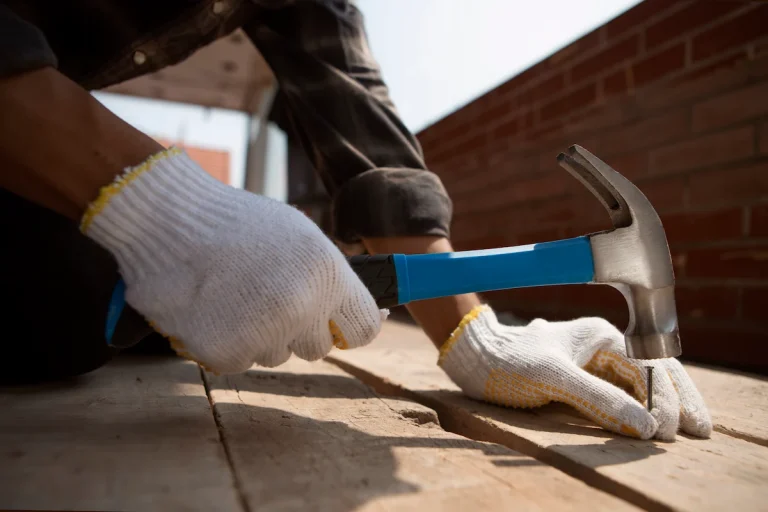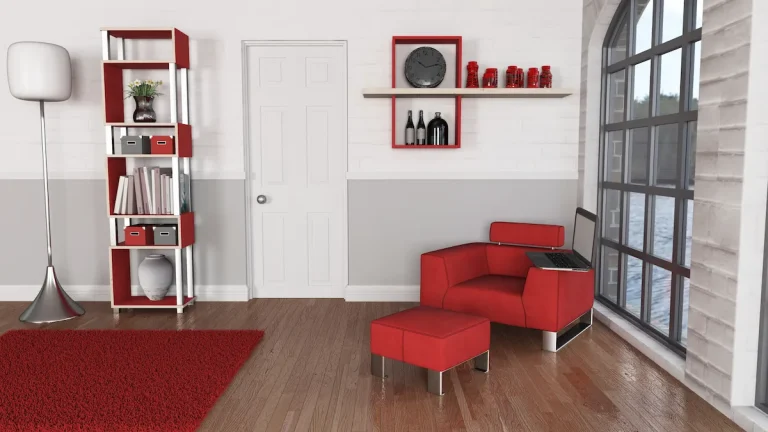Considering the use of carpet in a bathroom may appear unconventional; however, it can enhance the aesthetic appeal of the space significantly. This article examines the advantages and disadvantages of carpeting in bathrooms, identifies the most suitable materials for high-moisture environments, and offers guidance on selecting the appropriate style and colour that complements your decor.
Additionally, it presents installation recommendations and maintenance practices to ensure that your bathroom carpet remains fresh and inviting over time. Explore the content to determine whether carpet could be a suitable addition to your bathroom.
Is Carpet in the Bathroom a Good Idea?
The incorporation of carpeting in bathrooms has been a topic of discussion among homeowners and interior design professionals for decades. Its popularity peaked in the 1950s when bathroom carpeting was frequently regarded as a luxurious enhancement to home aesthetics.
In contemporary settings, however, the practicality of carpeted bathrooms warrants careful consideration, particularly regarding moisture levels and the associated risks of mould and mildew. This has led many individuals to reassess their flooring options as they strive to achieve an optimal balance between comfort and cleanliness in bathroom renovations.
What Are the Pros and Cons of Having Carpets in the Bathroom?
Carpeted bathrooms offer a soft and cosy ambiance; however, they present a range of advantages and disadvantages that homeowners must carefully consider.
The comforts provided by carpeted bathrooms are undeniable. They create a warm and inviting atmosphere that is often unmatched by hardwood or tiled floors. The plush texture underfoot can impart a sense of luxury to an otherwise utilitarian space, enhancing the experience of early mornings. Nevertheless, it is crucial to acknowledge some of the drawbacks associated with this choice.
- Cleaning can be particularly challenging, as many traditional cleaning methods may prove ineffective against stains and spills.
- Moisture retention is a significant concern, which can potentially lead to mould growth if the carpet is not properly maintained.
Therefore, while homeowners may enjoy the benefits of a carpeted bathroom, it is imperative to remain diligent about cleanliness and maintenance to fully appreciate this distinctive option.
What Are the Best Types of Carpet for Bathrooms?
When selecting the most suitable types of carpet for bathrooms, homeowners should consider materials specifically designed to withstand moisture and humidity, thereby ensuring both durability and aesthetic appeal in their flooring choices.
Options such as short-pile carpeting and stain-resistant carpets are particularly advantageous, as they offer comfort while minimising the risks associated with mould and mildew, especially when installed over a .
What Materials are Suitable for Bathroom Carpeting?
When selecting materials for bathroom carpeting, such as nylon, polyester, PTT (Triexta polyester), and polypropylene are frequently recommended due to their moisture resistance and durability.
These materials are particularly beneficial for bathroom environments, as they effectively inhibit the growth of mould and mildew, which can thrive in humid conditions. For instance, nylon is recognised for its resilience and stain resistance, ensuring a clean and visually appealing appearance even in high-traffic areas. Likewise, polyester provides a soft texture underfoot and offers a range of vibrant colour options.
- PTT presents an eco-friendly alternative, as it is produced from renewable materials while still delivering excellent moisture control.
- Polypropylene is a cost-effective option that remains impervious to moisture, making it a prudent choice for bathroom settings.
Incorporating suitable carpet underlay significantly enhances comfort and insulation, which is essential for cooler tile or stone floors. This underlay not only adds a plush layer underfoot but also extends the lifespan of the carpet by minimising wear and tear, ultimately contributing to a more inviting and durable bathroom environment.
What Are the Most Durable and Water-resistant Carpet Options?
For homeowners in search of durable and water-resistant carpet options for their bathrooms, carpets that feature a water-resistant coating or are constructed from luxury vinyl tiles (LVT) are exemplary choices capable of enduring the demands of bathroom use.
Particularly, brands such as Mohawk and Shaw provide impressive collections that emphasize both aesthetics and functionality. These carpets demonstrate remarkable durability and water resistance compared to traditional materials such as nylon and polyester. They not only resist moisture but also repel stains, making them suitable for high-traffic areas that are susceptible to spills and humidity.
For instance, Mohawk’s SmartStrand collection is distinguished by its innovative fibre technology, which offers a soft texture and superior resiliency. Similarly, Shaw’s LifeGuard carpets incorporate an integrated waterproof backing that guarantees comprehensive protection from spills.
To maintain these carpets and extend their lifespan, it is advisable to perform regular cleaning with a vacuum designed for the specific texture, in addition to periodic professional deep cleaning.
By adhering to these maintenance practices, homeowners can relish their carpet selections for years without experiencing significant deterioration.
How to Choose the Right Carpet for Your Bathroom?
Selecting the appropriate carpet for a bathroom necessitates a thorough evaluation of several factors that impact both functionality and aesthetics. It is essential to ensure that the chosen flooring aligns with the desired vision for comfort and luxury within the space.
Important considerations include moisture control, the proximity of the carpet to key areas such as the basin, shower, and bath, as well as the overall design trends that harmonise with the existing interior design style.
What Factors Should You Consider When Choosing Bathroom Carpet?
When selecting bathroom carpeting, several critical factors must be taken into consideration, including moisture control, ease of maintenance, and appropriate flooring installation methods to ensure longevity.
It is essential to assess carpet durability, as bathroom environments typically experience elevated humidity levels that can lead to significant wear and tear. The choice of materials is of utmost importance; selecting moisture-resistant options such as nylon or treated polypropylene can greatly enhance both durability and comfort.
- Moisture-Resistant Materials: Opting for carpets that feature specific moisture barriers can effectively prevent mould growth, thereby protecting both the carpet and the subfloor.
- Ease of Maintenance: Regular cleaning is vital. Many experts advise utilising a vacuum to remove debris and washing the carpet periodically with mild detergents to maintain cleanliness.
- Installation Methods: Employing proper installation techniques, including securing edges and using suitable adhesives, can significantly contribute to the carpet’s lifespan.
By considering these factors, individuals can maximize the effectiveness and longevity of bathroom carpeting.
What Colours and Patterns Work Best for Bathroom Carpets?
Selecting the appropriate colours and patterns for bathroom carpets can significantly enhance the overall aesthetics of the space, aligning with contemporary design trends while preserving a sense of tranquillity.
For many homeowners, the choice of flooring plays a critical role in shaping the overall ambience of the bathroom. By integrating suitable carpet designs with complementary colours, one can create a cohesive appearance that elevates the space.
While bold colours such as navy blue or deep green can make a striking statement, lighter shades like soft pastels tend to convey freshness and cleanliness. Patterns such as geometric designs or subtle florals introduce a dynamic element that captures attention and enhances visual interest. When paired with elegant tiles or chic vinyl flooring, these selections can contribute to a serene environment that feels both expansive and inviting.
- Bold Colour Choices: Navy, Deep Green
- Light Shades: Soft Pastels
- Patterns: Geometric, Florals
It is essential to consider the interplay between these elements, as the right combination cultivates an inviting atmosphere, transforming the bathroom into a personal sanctuary.
How to Install Carpets in the Bathroom?
Installing carpet in a bathroom necessitates meticulous planning, along with the appropriate tools and materials, to ensure a seamless flooring installation capable of enduring the specific challenges presented by moisture-rich environments such as the shower area and bathtub area.
Homeowners should assemble essential supplies, including carpet underlay, adhesive-resistant products, and a wet and dry vacuum, to effectively facilitate the installation process.
Installing carpet in a bathroom necessitates meticulous planning, along with the appropriate tools and materials, to ensure a seamless flooring installation capable of enduring the specific challenges presented by moisture-rich environments.
Homeowners should assemble essential supplies, including carpet underlay, adhesive-resistant products, and a wet and dry vacuum, to effectively facilitate the installation process.
What Tools and Materials Do You Need for Bathroom Carpet Installation?
To install bathroom carpet effectively, it is essential to have a specific set of tools and materials to hand, which includes carpet underlay, moisture-resistant adhesive products, and various installation tools such as utility knives, measuring tape, and a wet-and-dry vacuum for cleanup purposes. Consider using carpet squares for easier installation and maintenance.
When undertaking the process of bathroom carpet installation, possessing the appropriate equipment guarantees not only ease of application but also the durability of the flooring. The following items should be included in the toolkit:
- Carpet Underlay: This underlay contributes to comfort, warmth, and insulation, thereby enhancing the overall ambience of the bathroom.
- Moisture-Resistant Adhesive Products: These are crucial in preventing moisture from compromising the bond between the carpet and the floor, thus ensuring long-term durability.
- Carpet Knife: A high-quality knife facilitates precise cutting, minimising frayed edges and ensuring a professional finish.
- Measuring Tape: Accurate measurements are vital for cutting the carpet to the exact dimensions of the space.
- Seam Tape: This product is utilised to join carpet pieces securely, ensuring a seamless appearance and added strength.
- Wet-and-Dry Vacuum: An essential tool for maintaining a tidy workspace and removing debris before, during, and after the installation process.
- Waterproof Subfloor: Ensures moisture is kept at bay, providing a stable base for your carpet installation.
The significance of utilising quality products cannot be overstated, as it directly influences the performance and aesthetic appeal of the flooring. Investing in high-quality tools and materials not only streamlines the installation process but also enhances the longevity of the carpet, making it a worthwhile endeavour
What Steps Should You Follow for a Proper Bathroom Carpet Installation?
For a successful bathroom carpet installation, it is essential to adhere to a systematic series of steps, which include preparing the subfloor, laying carpet underlay, and securely fastening the carpet to establish a durable and moisture-resistant flooring solution.
To commence, it is important to clear the bathroom of all furnishings to create an unobstructed workspace. Following this, inspect and clean the subfloor thoroughly to remove any debris, stains, or imperfections that may affect the installation process. Accurate measurement of the bathroom dimensions is crucial to determine the quantities of carpet and underlay required.
- Purchase quality materials that are designed to withstand moisture, as bathrooms are typically exposed to damp conditions.
- Once the subfloor is adequately prepared, install the carpet underlay securely to enhance comfort and serve as an additional moisture barrier.
- Subsequently, carefully roll out the carpet, ensuring that any patterns align correctly and that the edges are neatly bordered.
- Finally, secure the carpet using tack strips along the perimeter, trimming any excess as necessary to achieve a flawless finish.
By following these steps, one can ensure a long-lasting and visually appealing bathroom carpet that not only enhances the aesthetic of the space but also provides the necessary durability required in high-moisture areas.
How to Clean and Maintain Bathroom Carpet?
Maintaining and cleaning bathroom carpets requires a careful approach to ensure both longevity and hygiene, especially in moisture-prone environments that may encourage the growth of mould and mildew.
Regular vacuuming using a wet and dry vacuum, alongside suitable cleaning methods, is essential for preserving the quality and appearance of the carpet
What Are the Best Cleaning Methods for Bathroom Carpets?
The most effective cleaning methods for bathroom carpets involve a combination of regular vacuuming, spot cleaning, and deep cleaning techniques to address moisture and stains appropriately.
To ensure a pristine and hygienic environment, it is essential to adopt a systematic approach:
- Regular vacuuming should be carried out at least once a week to eliminate dust and debris that can accumulate due to the humid conditions commonly found in bathrooms.
- For spot treatments, it is advisable to use cleaning solutions specifically formulated for carpets. These solutions effectively tackle stains while minimising moisture retention, which is crucial in preventing the growth of mould and mildew.
- Utilising a wet-dry vacuum for deeper cleaning can significantly enhance the longevity and appearance of the carpet. This powerful tool extracts trapped dirt and moisture, ensuring that carpets dry more quickly and remain odour-free.
By integrating these strategies, homeowners can maintain a clean and healthy bathroom environment.
How Often Should You Clean and Replace Bathroom Carpet?
The frequency of cleaning and the eventual replacement of bathroom carpets depend on several factors, including the level of foot traffic, moisture exposure, and the durability of the carpet material itself.
In bathrooms, high foot traffic can significantly accelerate the accumulation of dirt and moisture within carpets. It is advisable to conduct regular cleaning on a weekly basis for areas with heavy usage, whereas less frequented spaces may only require attention every two weeks. The quality of the material is also a critical consideration; synthetic fibers like nylon polyester tend to resist moisture and stains more effectively than natural fibres. Homeowners should assess the condition of the carpet by examining it for signs of wear and tear.
- Traffic Levels: Frequent use necessitates more regular cleaning.
- Moisture Exposure: High humidity environments can lead to mould growth, requiring more routine monitoring.
- Material Quality: It is prudent to invest in durable carpets that can withstand the unique challenges presented by bathrooms.
Ultimately, if carpets exhibit significant fraying, discolouration, or a persistent unpleasant odor, it may be necessary to consider complete replacement.
The following guidelines may assist in making informed decisions:
- Traffic Levels: Frequent use necessitates more regular cleaning.
- Moisture Exposure: High humidity environments can lead to mould growth, requiring more routine monitoring.
- Material Quality: It is prudent to invest in durable carpets that can withstand the unique challenges presented by bathrooms.
Ultimately, if carpets exhibit significant fraying, discolouration, or a persistent unpleasant odour, it may be necessary to consider complete replacement.


























